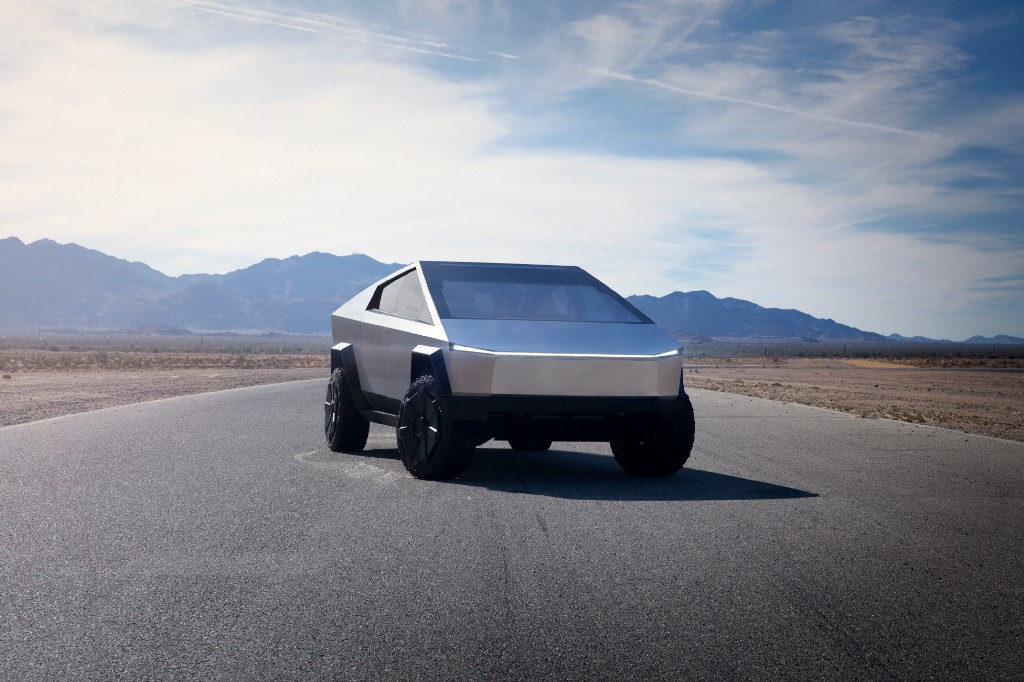Can Tesla Maintain Its Lead As Electric Vehicle Marketshare Is Overtaken by New Competitors?
As Tesla holds the undeniable market lead in the electric vehicle industry, new competition from competitors bringing their A-game is bound to challenge that title.
A shift is already occurring, as data from the S&P Global Mobility firm is finding a downward trend in Tesla’s share of new electric vehicle registrations.
Tesla’s total share of fully-electric registrations in the third quarter of this year is down to 65%, a decrease of 6% year-over-year and 14% as compared to 2020.
Possible future trends are more stark: S&P shares a bold projection that Tesla’s electric vehicle marketshare will continue dropping to reach below 20% within three years.
S&P finds fault with Tesla not having more vehicles available for under $50,000, as affordability is a key detriment to maintaining marketshare.
The good news is that Tesla has agreed that affordability is a concern, and we expect the automaker to take steps with new configurations and price adjustments once demand begins to catch up to supply. A Tesla with a ~ $25,000 starting price may be one of the greatest catalysts to maintaining marketshare.
The more obvious reason for such a drastic downtrend can be attributed primarily to the massive increase in electric vehicle availability from competing automakers.
Not only will more desirable and affordable electric vehicles be immediately available for consumers to either ideally configure online or locate on a dealership lot, but the amount of models will more than triple encompassing numerous classes of vehicles.
Those classes include the popular SUV and truck markets, the latter of which Tesla will finally enter next year with Cybertruck. While Cybertruck has the potential to be the automaker’s best product yet, market pressure from the Rivian R1T, Ford F-150 Lightning and Chevy Silverado EV among other options in the class will require Tesla to be as competitive as possible on features, pricing, and specifications.
Ultimately, the futuristic design of Cybertruck is the hook as consumers look to bold new designs as inspiration for purchases — market differentiation or excellence needs to be the sinker.
Therefore, as of right now we aren’t overly worried about Cybertruck’s share of the segment as long as Tesla offers enough variety in its configurations.
Then there’s the most popular vehicle segment in North America: the crossover, which dominates over 45% of new light vehicle sales.
Unsurprisingly, the crossover segment is poised to become the most competitive for electric vehicles.
Tesla fills this gap with Model Y, which is the automaker’s most popular overall vehicle.
The amount of current and upcoming options for crossover/SUV’s is staggering, with automakers pairing brilliant design and ingenuity to the platform.
One reason at the moment is that the weight and size is conducive to electric vehicle design, carrying large batteries and potentially multiple powertrains.
From mainstays like the Cadillac LYRIQ to newcomers in the Fisker Ocean, crossover/SUV’s will require Tesla not to remain complacent. That is, once the automaker fulfills a large backlog of Model Y orders.
Frankly, sedans may not be nearly as important as they comparatively account for a fraction of vehicle sales in North America. Tesla is already accounting for this by currently operating production lines for Model 3 at Giga Shanghai and Giga Fremont, rather than utilizing the resources of all of its factories.
Yet, sedans also allow for potentially more affordable vehicles which will come into play as the new $7,500 tax credit takes effect next year.
The high-end segment of the market that Model S and Model X are marketed towards make up an even smaller portion, with Tesla only collectively selling new versions by the tens of thousands. In terms of marketshare, discontinuing both vehicles would have little-to-no discernible effect.
Elon Musk has said that Tesla keeps Model S/X around mostly for nostalgic purposes, although they do serve as marketing for the brand and also compete with luxury sedans like the Lucid Air and increasingly desirable options from Audi, BMW, and Mercedes.
The rest of Tesla’s imminently-upcoming lineup, Tesla Semi and the next-generation Tesla Roadster, are also comparatively low-volume but equally important to the automaker. At the very least, they have the ability to convince entire segments that electric is the way forward.
Tesla will have to make up for volume with autonomous vehicles including a Robotaxi and Robovan, although it isn’t clear what percentage of these vehicles will be sold to consumers and the amount that will be sold for commercial use or utilized by Tesla to establish a Tesla taxi network.
Tesla is striving for volume, with an incredibly ambitious goal of producing 30 million vehicles per year by 2030. Let’s be clear: if Tesla can accomplish this and incentivize sales, the latter of which shouldn’t be an issue, then Tesla can handily sell more cars internationally than the entirety of the U.S. car market.
The U.S. light car market averages sales of around 17 million vehicles annually, despite the shortages of 2021 yielding just over 12 million new car sales.
Thus Tesla’s goals do indicate that the automaker is underway to maintaining its position as the market leader over the next decade, provided that Tesla can remain equally desirable to consumers among all market segments.
__________________
Disclaimer: Investing carries risk. This is not financial advice. The above content should not be regarded as an offer, recommendation, or solicitation on acquiring or disposing of any financial products, any associated discussions, comments, or posts by author or other users should not be considered as such either. It is solely for general information purpose only, which does not consider your own investment objectives, financial situations or needs. TTM assumes no responsibility or warranty for the accuracy and completeness of the information, investors should do their own research and may seek professional advice before investing.


👍